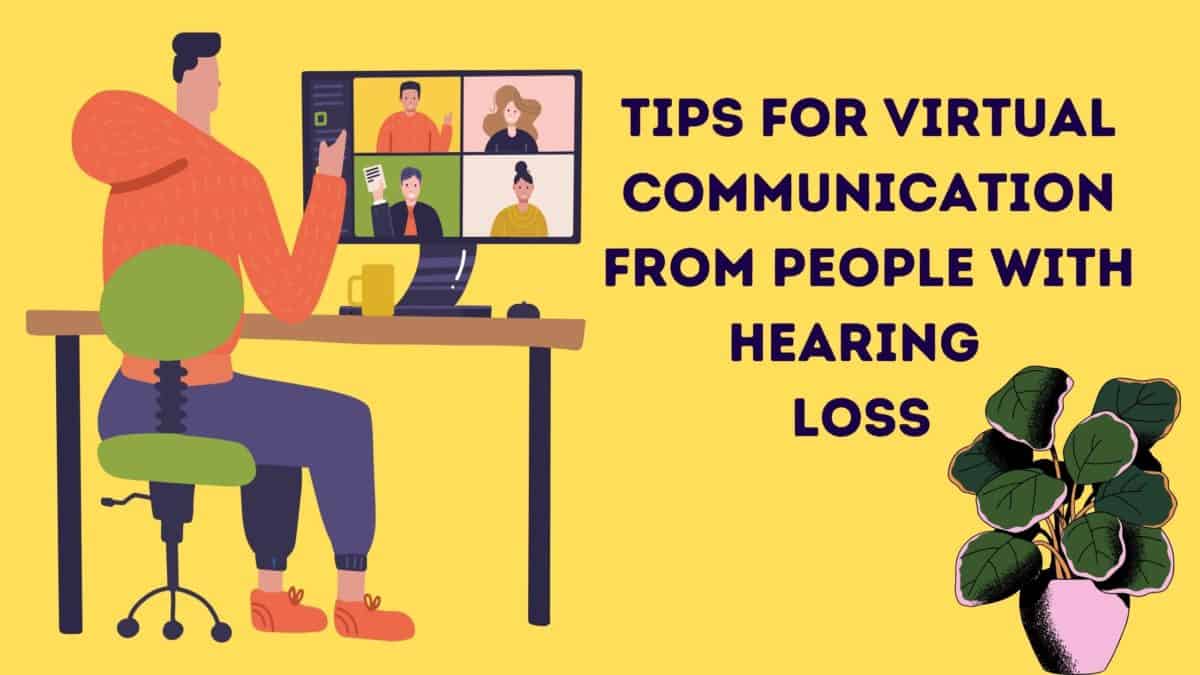- Understanding the Connection Between Tinnitus and Weather - May 17, 2025
- The Most Unexpected Reasons Hearing Aids Can Malfunction - May 9, 2025
- How OAE Testing Unveils Hidden Hearing Loss - April 15, 2025
Virtual communication has become a primary way we communicate with family and friends. The Covid-19 global pandemic required everyone to adapt to new ways of living, working, and communicating. Virtual communication platforms like Zoom, Skype, and FaceTime became the way that people went to school, continued working, and stayed in touch with loved ones.
Over one year later, virtual meetings and events have become the norm as the pandemic continues to shape our lives. Though virtual communication technologies – video calls, group chats, meetings, etc. – have allowed us to conveniently engage with others, this form of communication can present specific challenges for people with hearing loss. Impacting nearly 48 million people, hearing loss affects a person’s capacity to hear and process sound. By implementing simple strategies, virtual communication spaces can be more accessible and supportive of everyone’s hearing needs.
1) Ensure Clear Visibility
Visibility is an important part of communication, especially for people with hearing loss. While on virtual communication platforms, it can be easy for people to disappear from the screen, mute themselves, or appear unclear on the screen. This makes it difficult to see the person while they are speaking which can be a barrier. Visibility is important because it helps others follow what a person is saying. It allows people to see and access nonverbal cues like facial expressions, facial expressions, body language, lips for lip reading, etc. This really helps people, particularly with hearing loss, hear and understand the context.
So you want to make sure that you and others are as clearly visible on the screen as possible. A few ways to do this are by adjusting the lighting in your space, moving any objects that could be obstructing others’ view of you, ensuring you have a stable internet connection, etc.
2) Avoid Multitasking
It can be easy to multitask while virtually talking with others. It is important to avoid distractions (texting, cooking, cleaning, etc.) which can make it more challenging to hear. Multitasking can make people less visible and also creates additional noise to contend with. People with hearing loss can expend more energy in trying to hear and process information so being able to concentrate on what is being said is key. Be sure to be fully present and available for the conversation.
4) Use Audio Mute Button
Another potential source of distraction is background noise. Background noise provides competing sound for the brain to process. This can be overwhelming and exhausting, not only making it challenging to hear but also tiring. Be sure to eliminate any sources of unnecessary noise while virtually communicating with others. This means turning off the TV, background music, household appliances, etc. Additionally, you and others should make use of the mute button. When people are not speaking, they should mute their audio which eliminates any sound coming from their screen. This helps people focus on the person who is speaking and so is especially helpful when there are multiple people in a meeting or video chat.
5) Check Settings
Prior to launching a virtual call or meeting, be sure to check all the relevant settings to ensure that you are ready. You want to make sure that your internet connection is solid, you are using your preferred device, you have the correct platform downloaded and set up, etc. Also, check into live transcription services on the platform you are using. This feature can provide significant support by making it much easier to follow along in real-time!
6) Communicate Hearing Needs
Lastly, it is important to share and advocate for your hearing needs. Let others know about your hearing loss and ways they can support your hearing while engaging in virtual communication. Others want to include you in the conversation and can easily make simple adjustments to create a more inclusive environment.
In addition to practicing these tips, if you use hearing aids, you can pair them to the device you are using through Bluetooth technology. This allows your hearing aids to stream audio directly which enhances sound quality, making it easier to hear. Virtual communication has become part of daily life so be sure to practice and share ways to comfortably engage!

